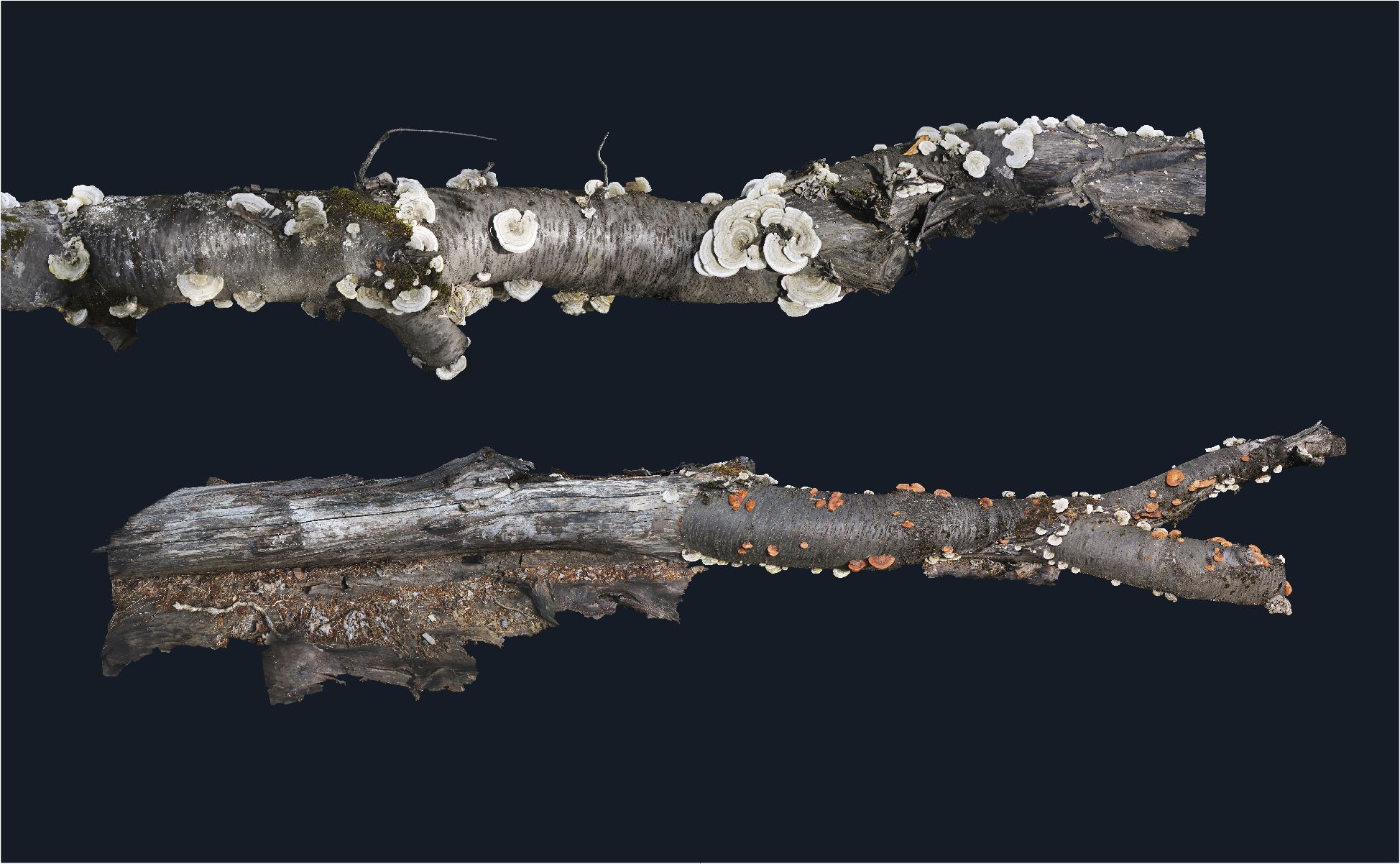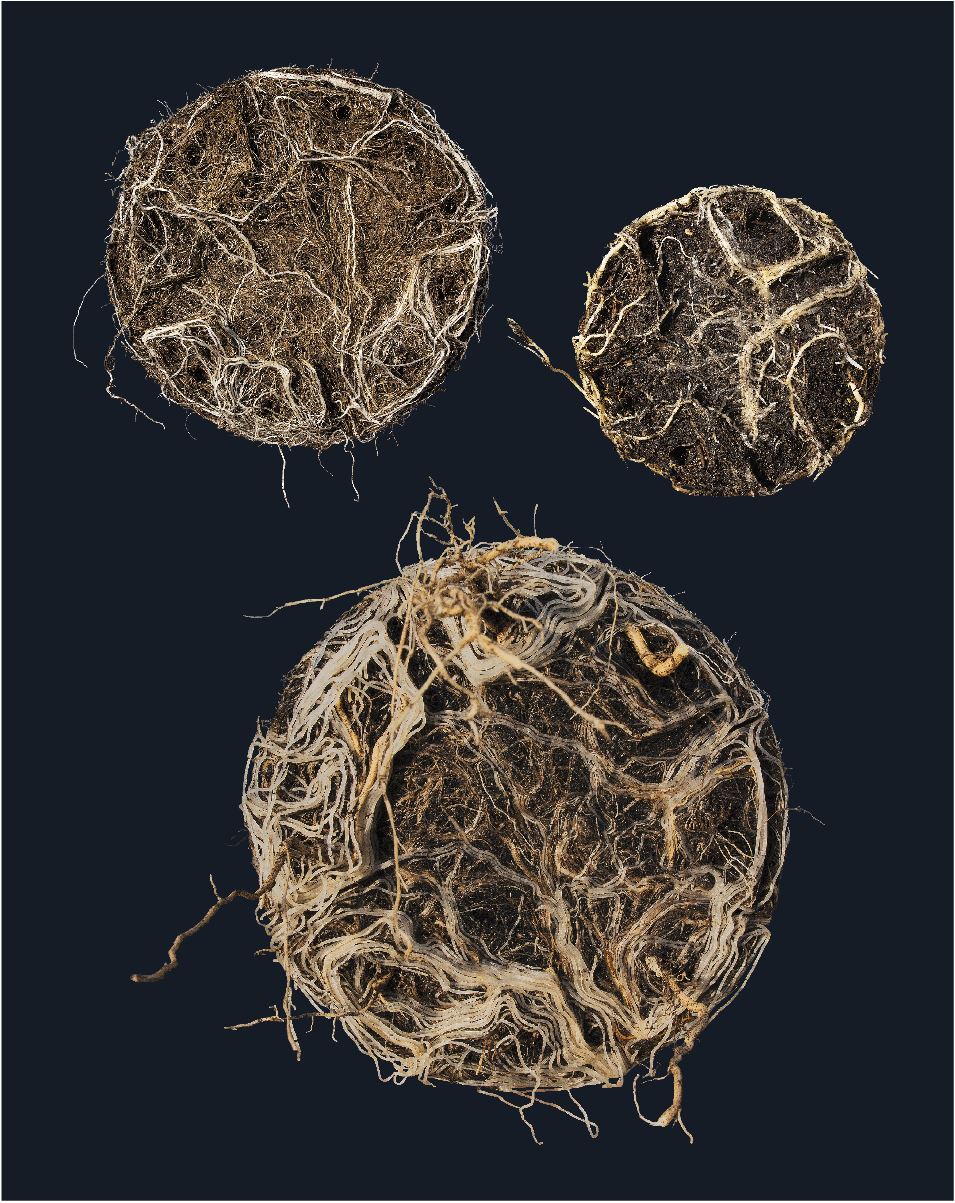Dark Ecology, 2018 onward
My work engages with familiar yet little‑noticed aspects of nature – its hidden structures and its cyclical existence.
Central to this exploration are plant roots and fungi on dead trees. Roots stand for life, performing many functions for the plants they support: they access water and minerals and store reserves. When roots are spatially constrained, dense tangles form, which restrict their nutrient supply.
Dead trees and the fungi that colonize them represent decay, but not as an endpoint; rather, they are visible signs of renewal. The fungi break down the dead wood and release nutrients into the soil for other plants and animals to use. In this way the circle closes between growth within artificial limits and the natural recycling of organic matter. Both processes demonstrate nature's persistence – life making space for itself, and death enabling new life.
The title and concept of this project are inspired by Timothy Morton's theory of Dark Ecology. He urges us to understand death and decay as integral parts of the ecological continuum: "nature" not as something idyllic, pure, and separate from humans, but as an uncanny reality.
We are all part of the "mesh," Morton says – an entangled network of infinite connections. Becoming, death, and rebirth proceed in cycles in which death is a turning point through which the living renews itself. A "dark" view of the world, and yet an illuminating approach to true ecological awareness.
Jhoane Baterna–Pateña


